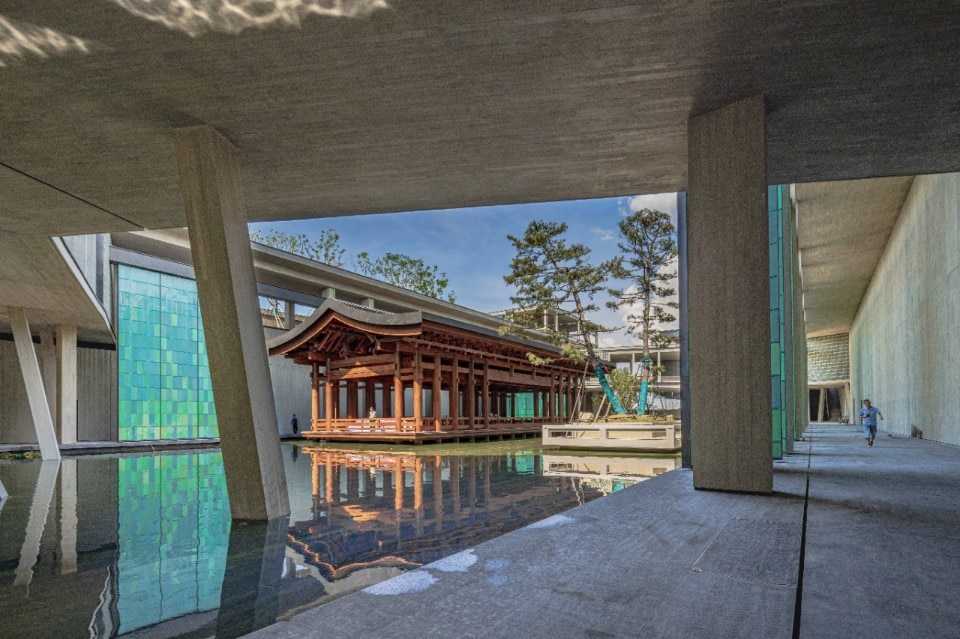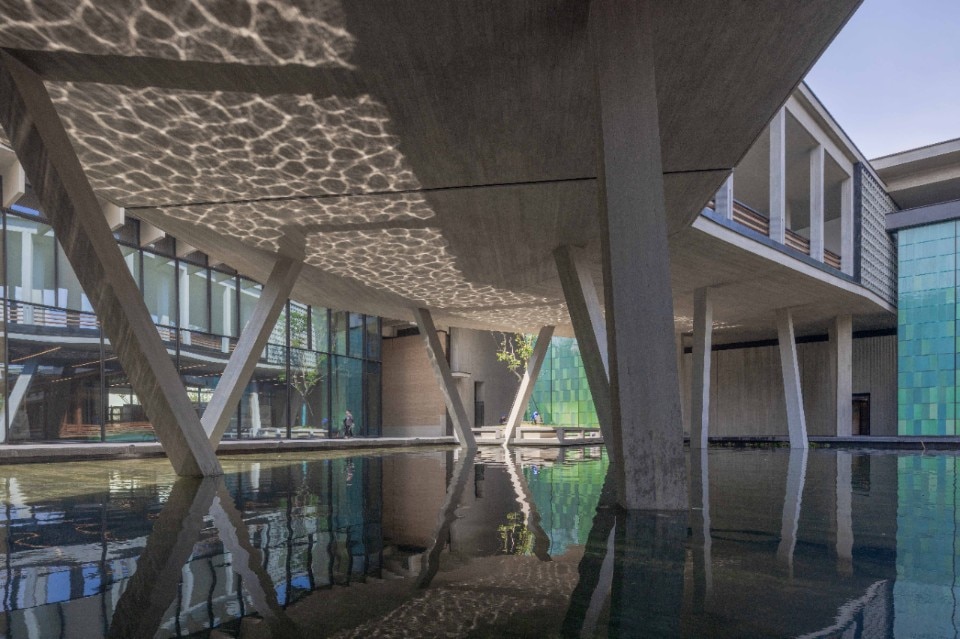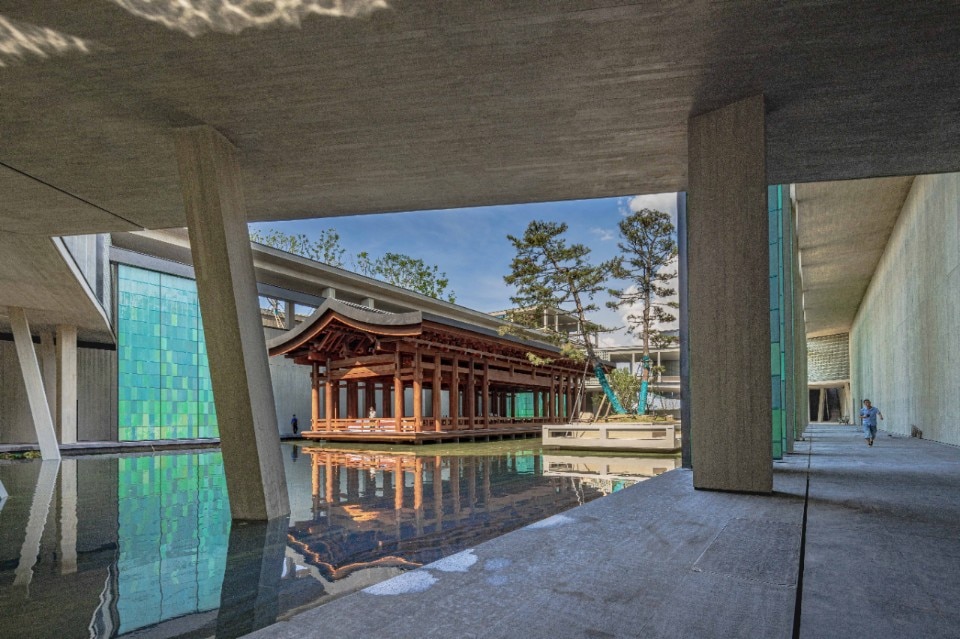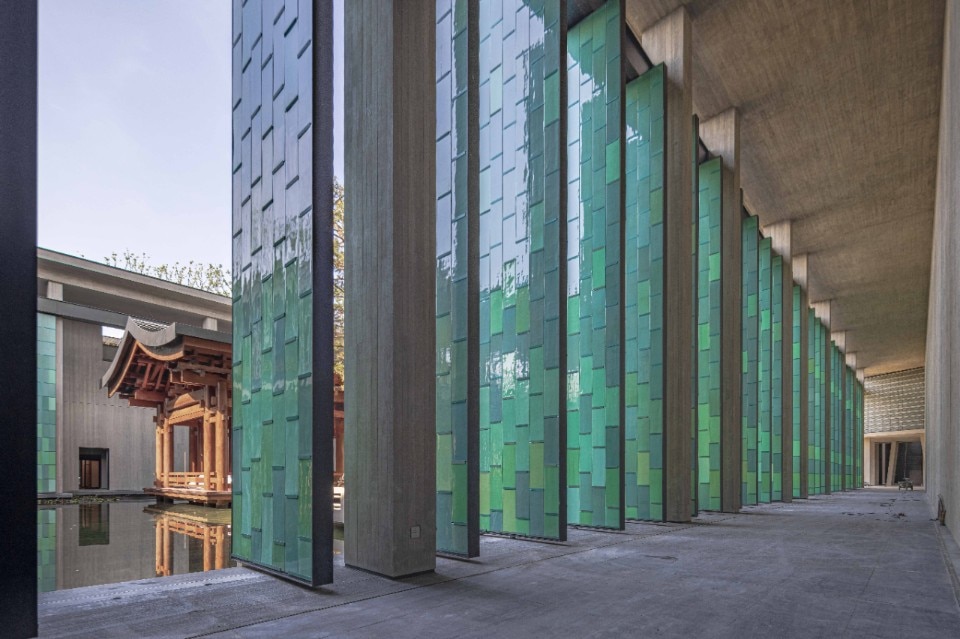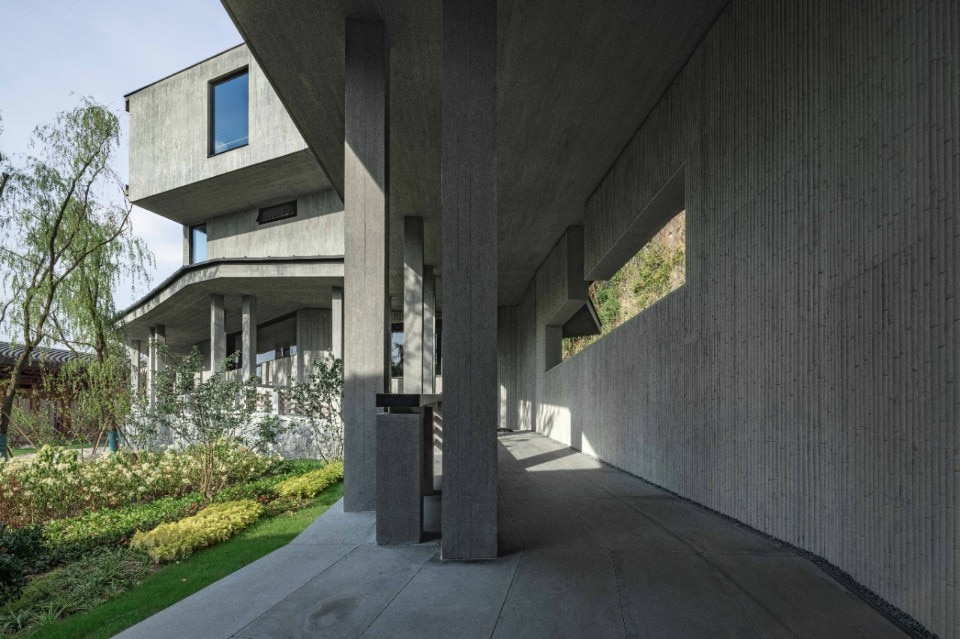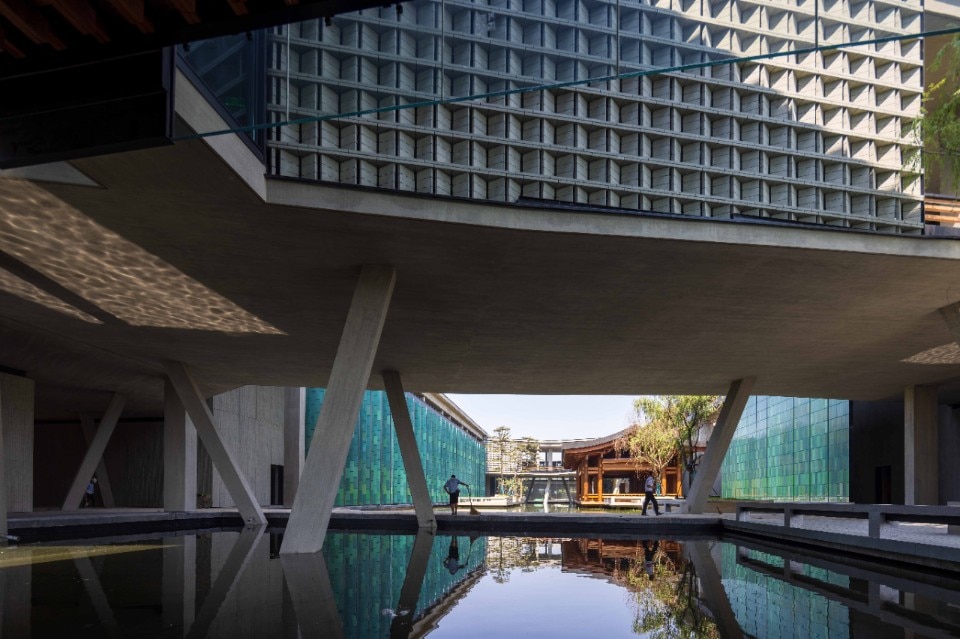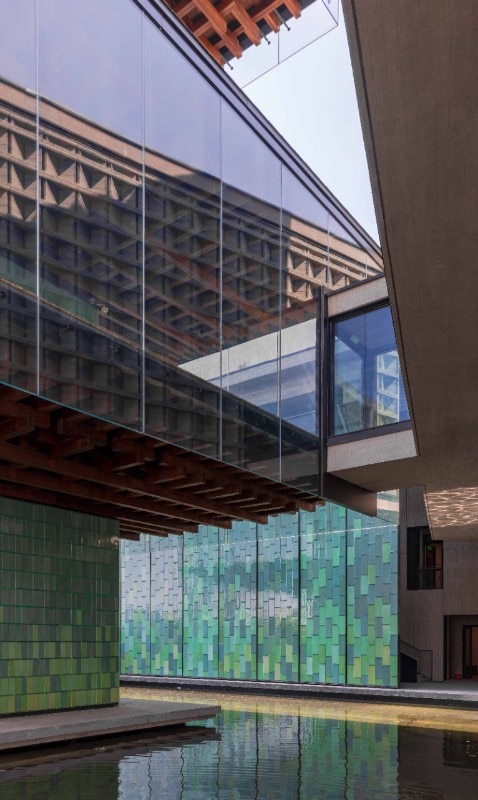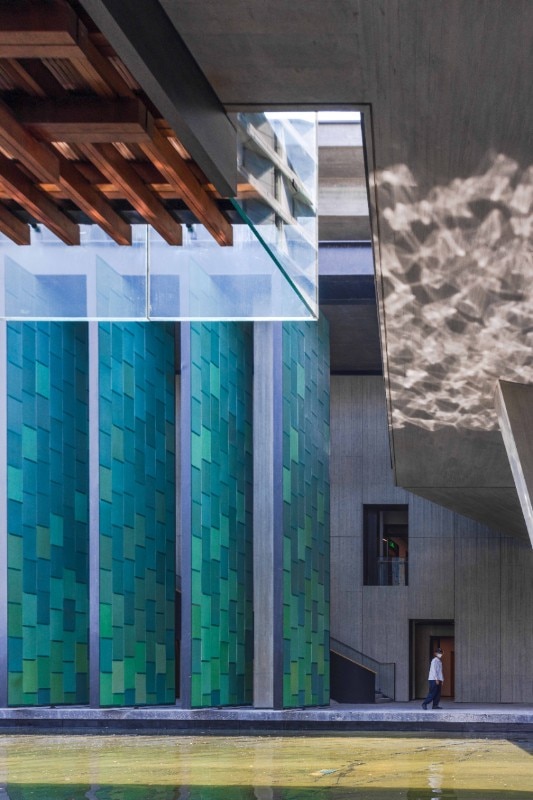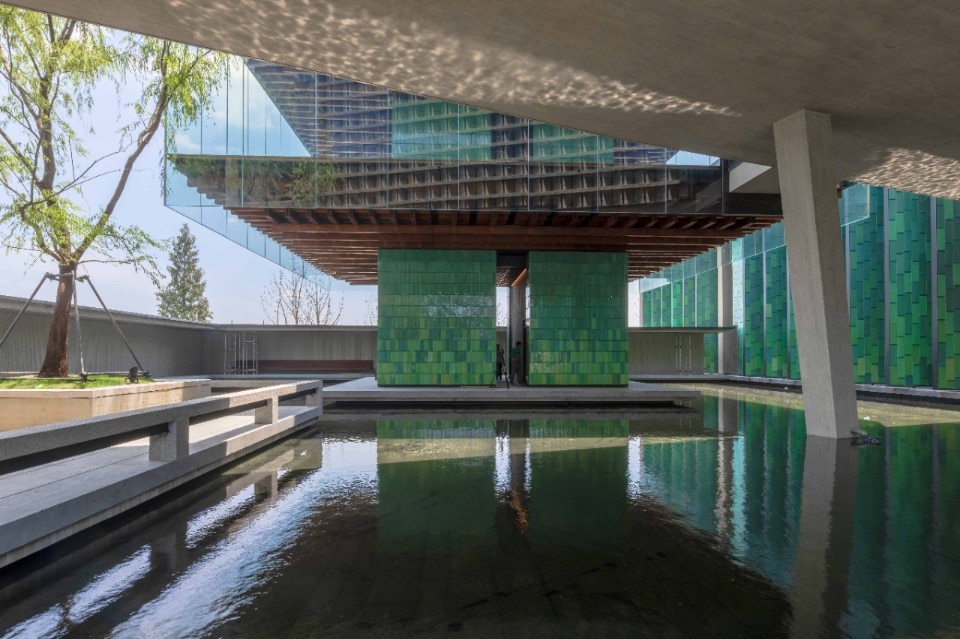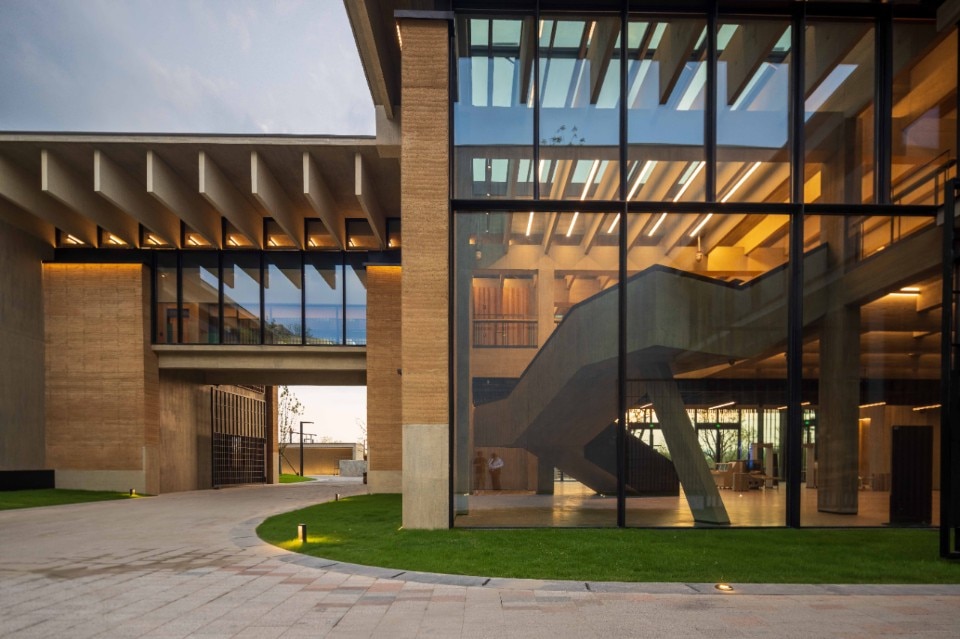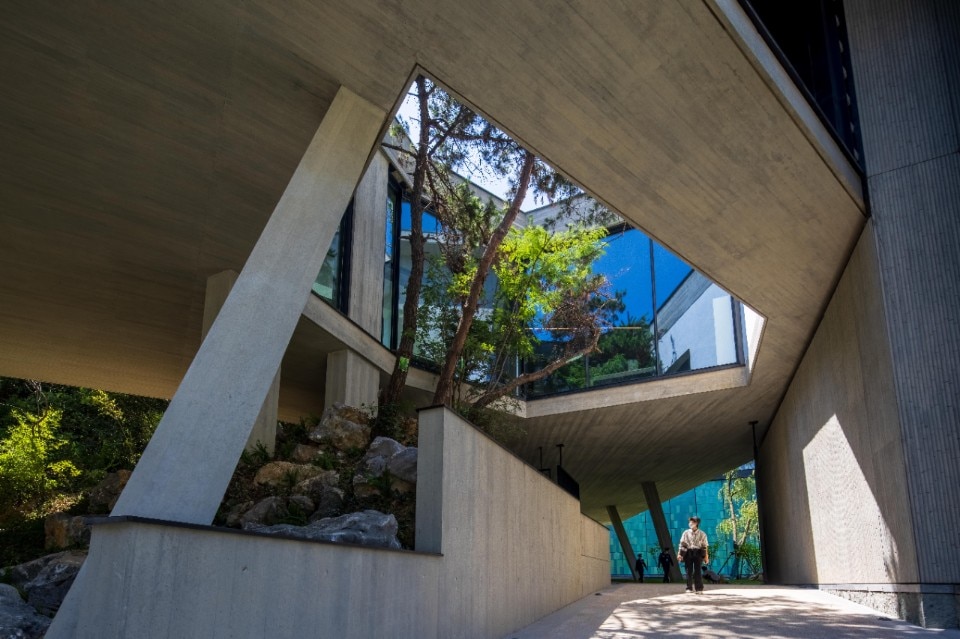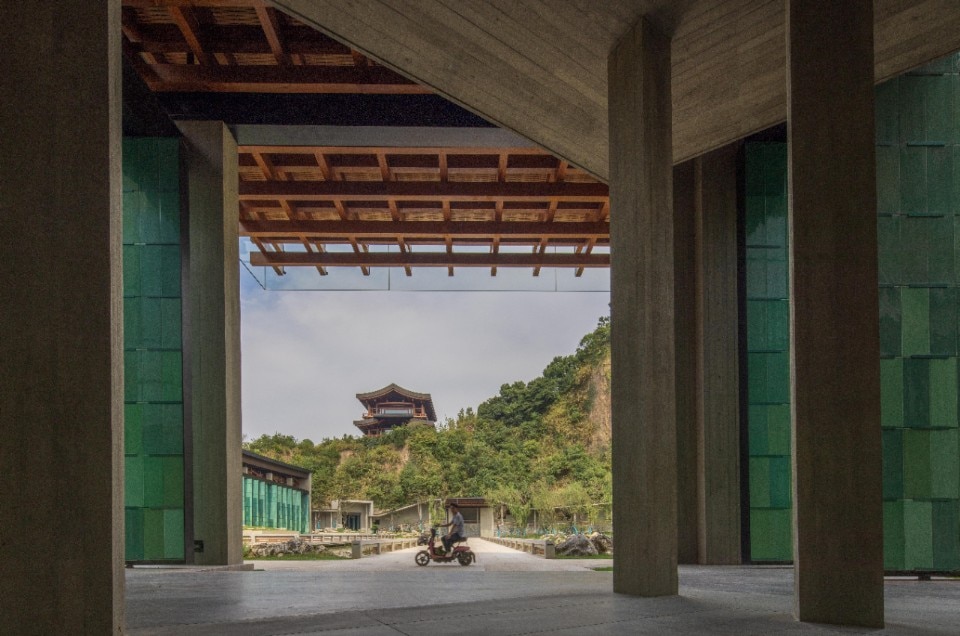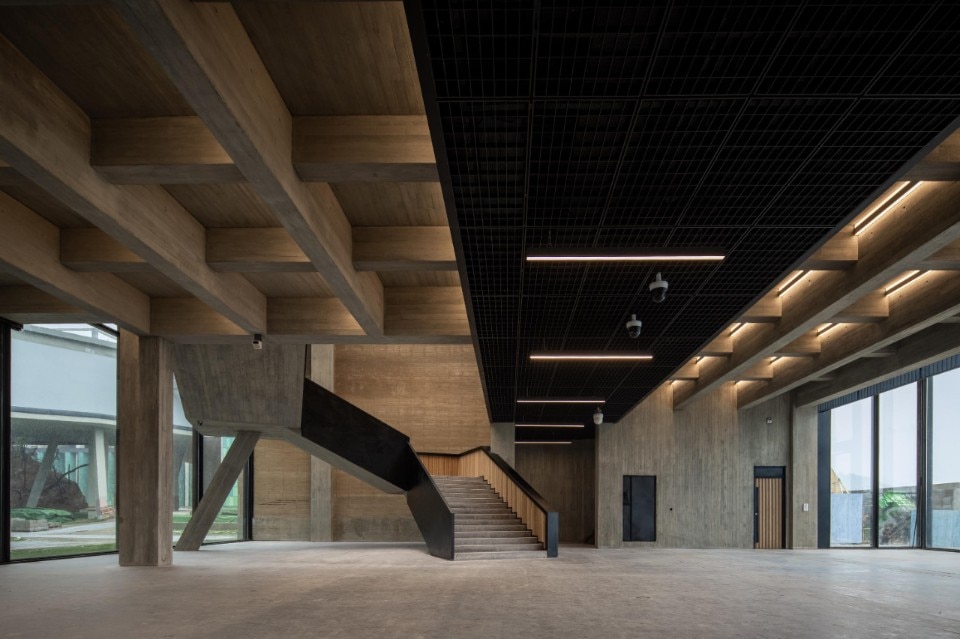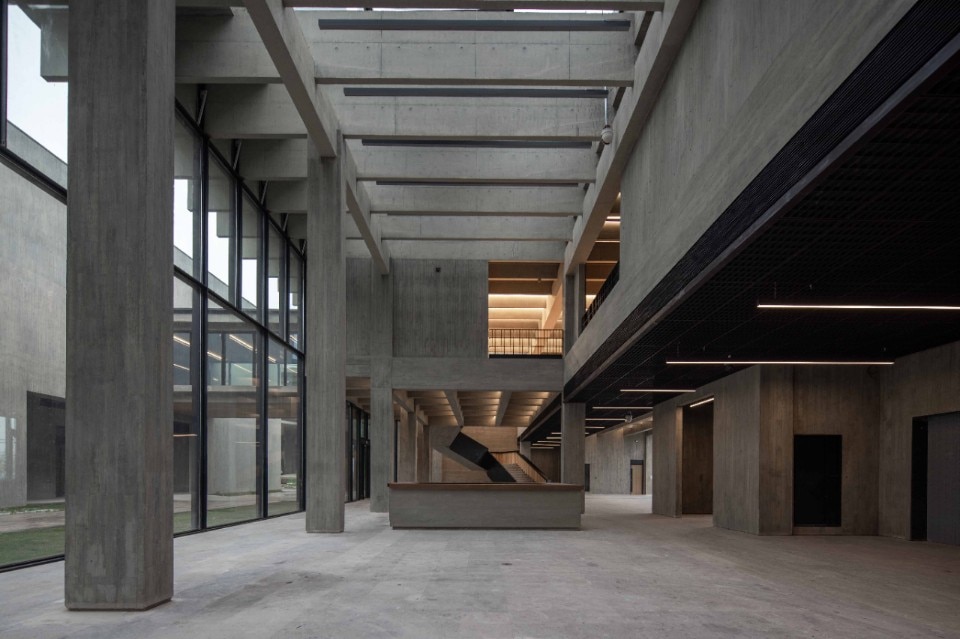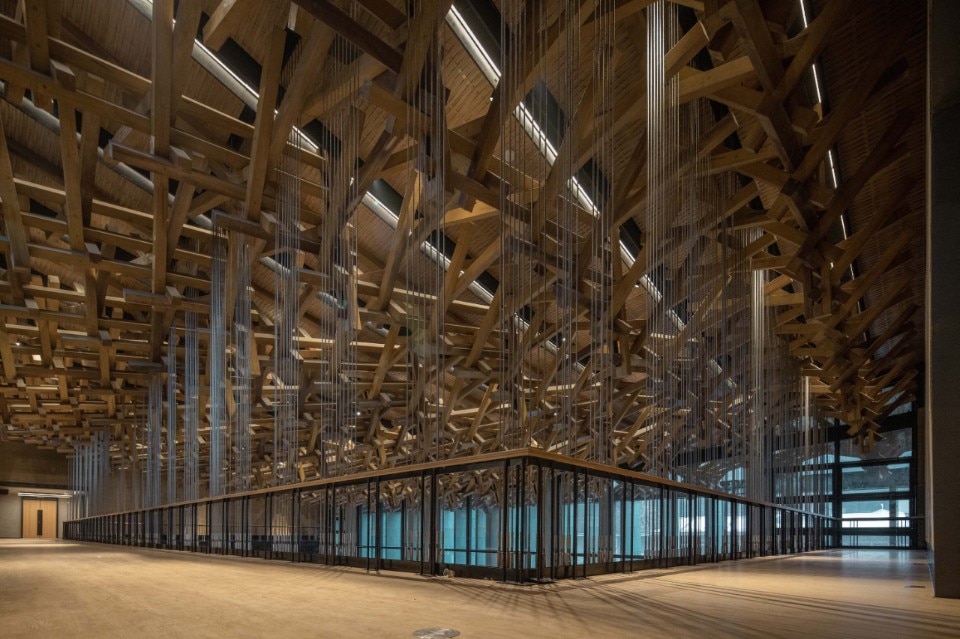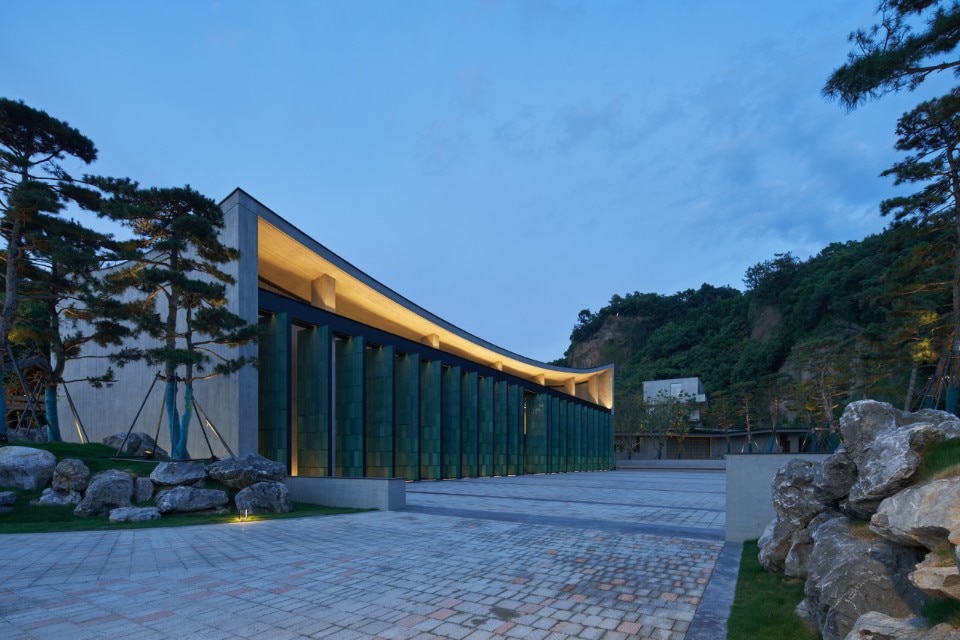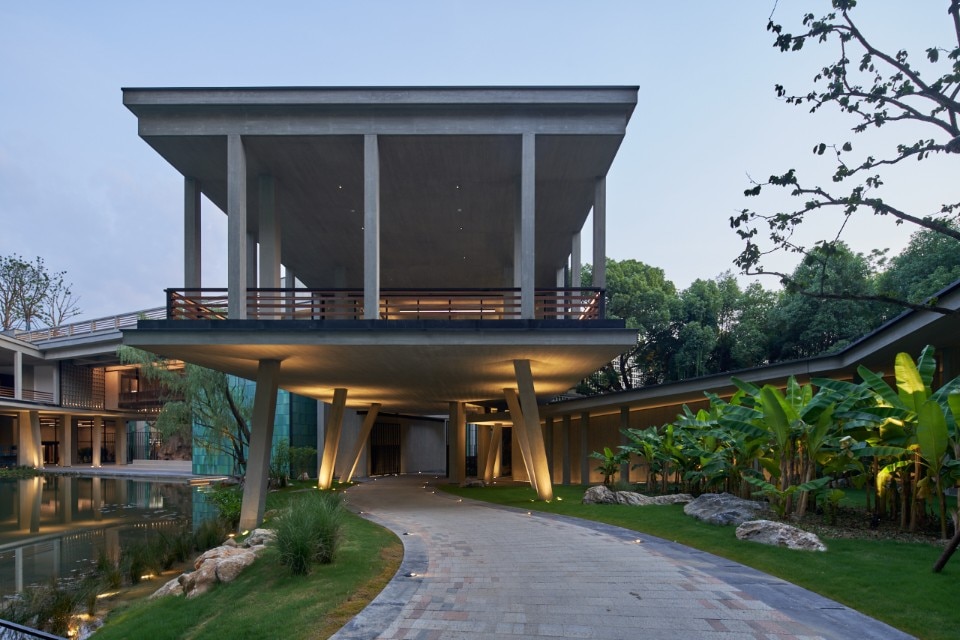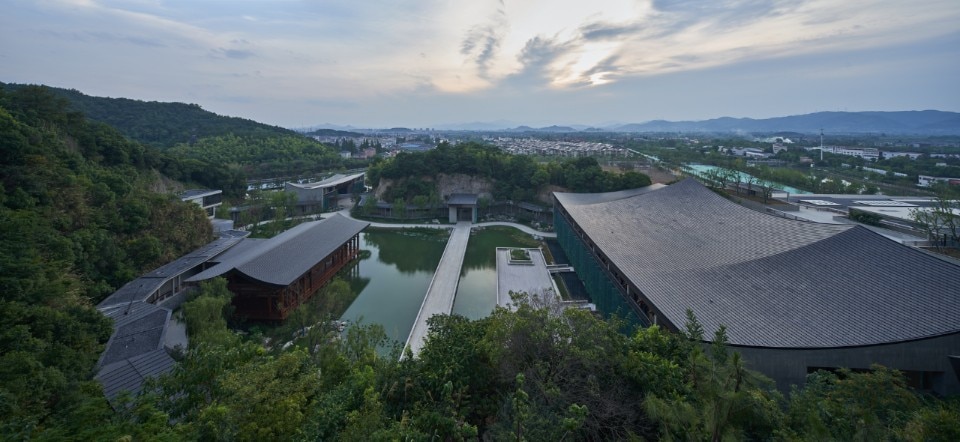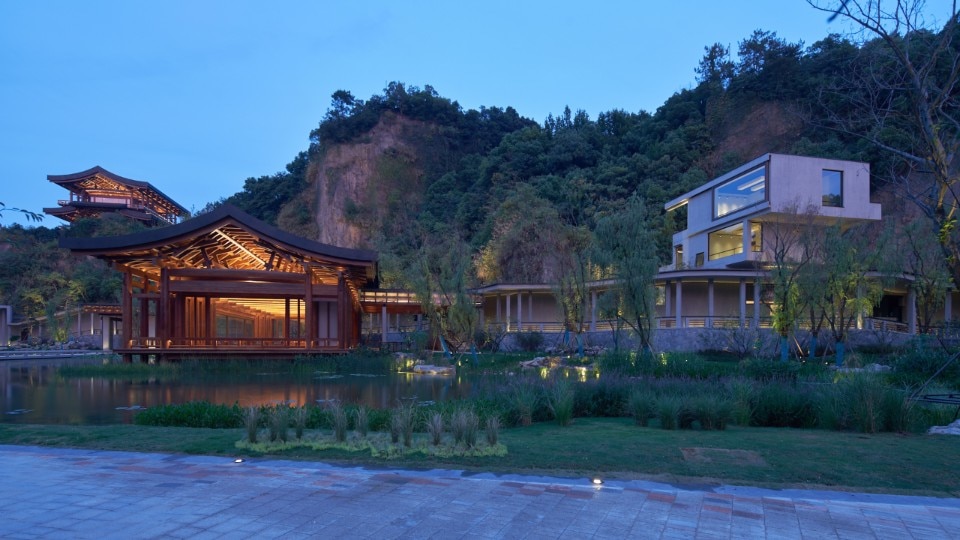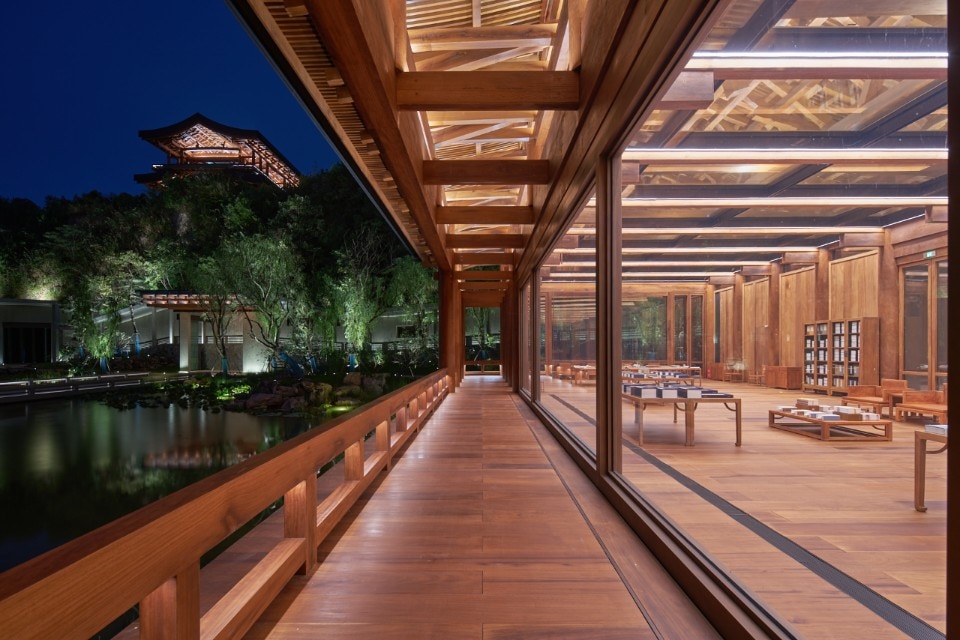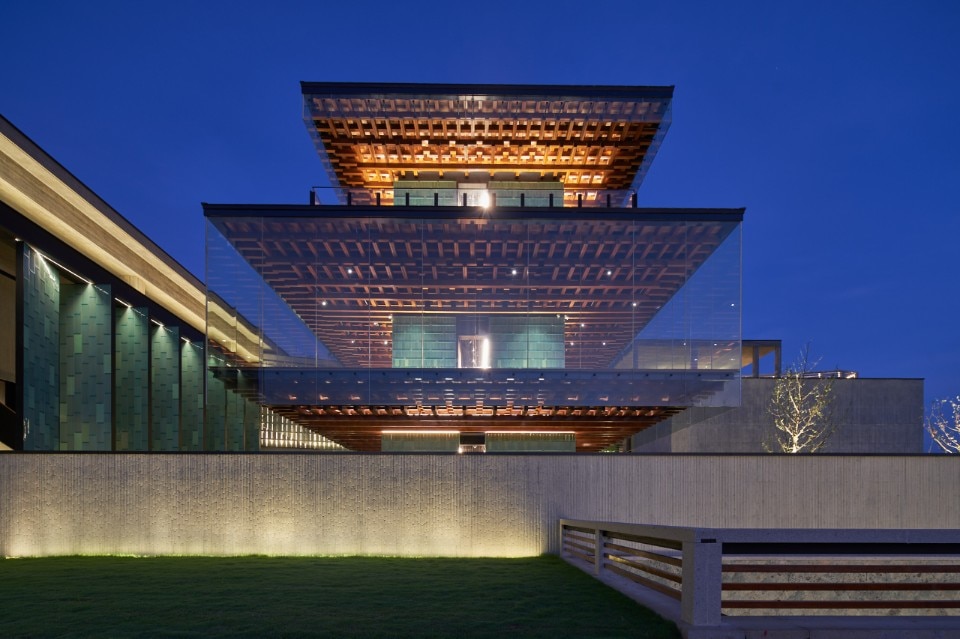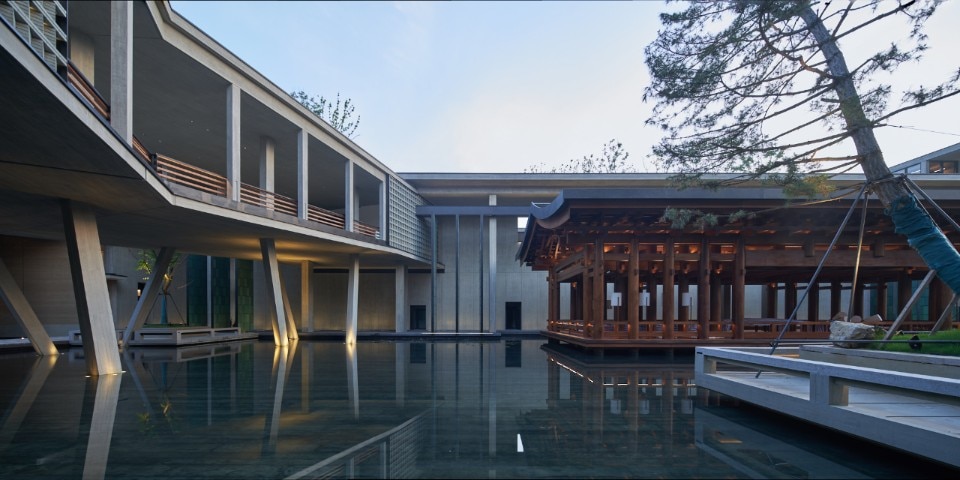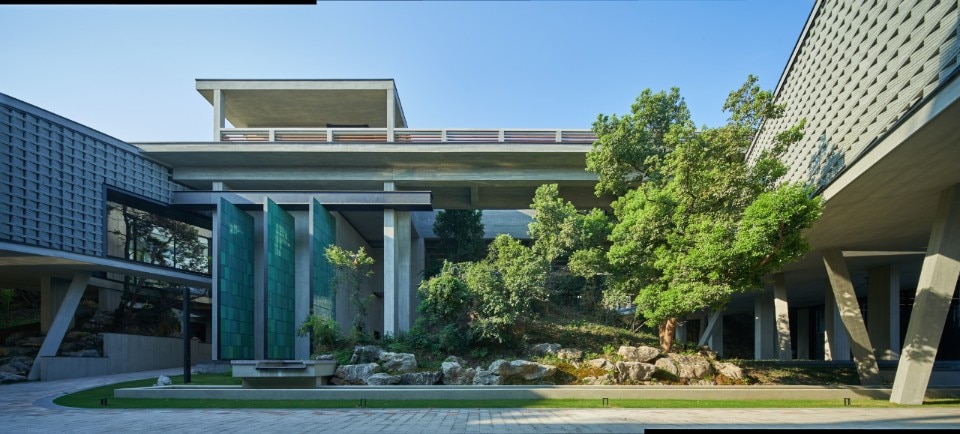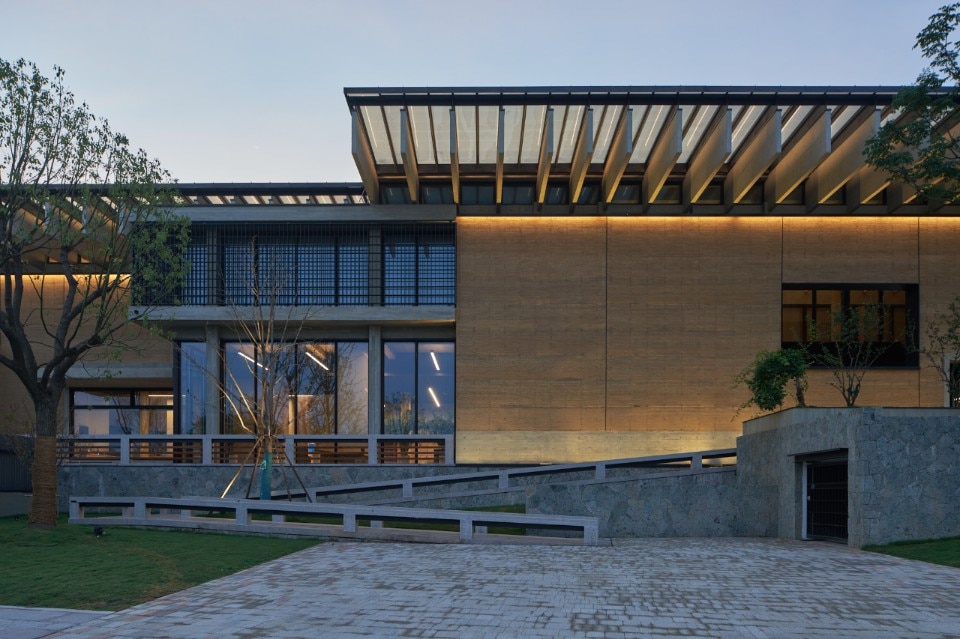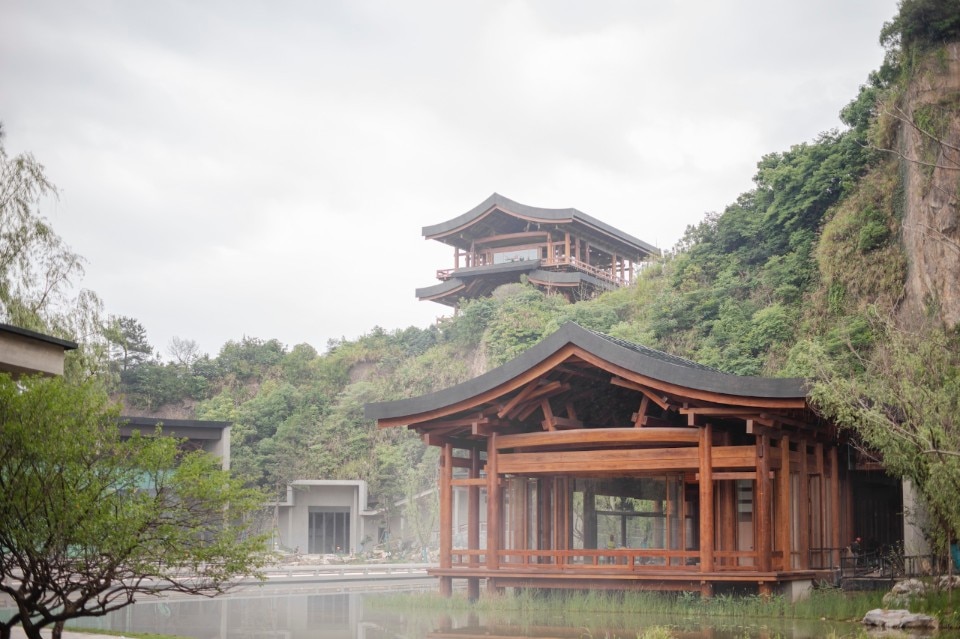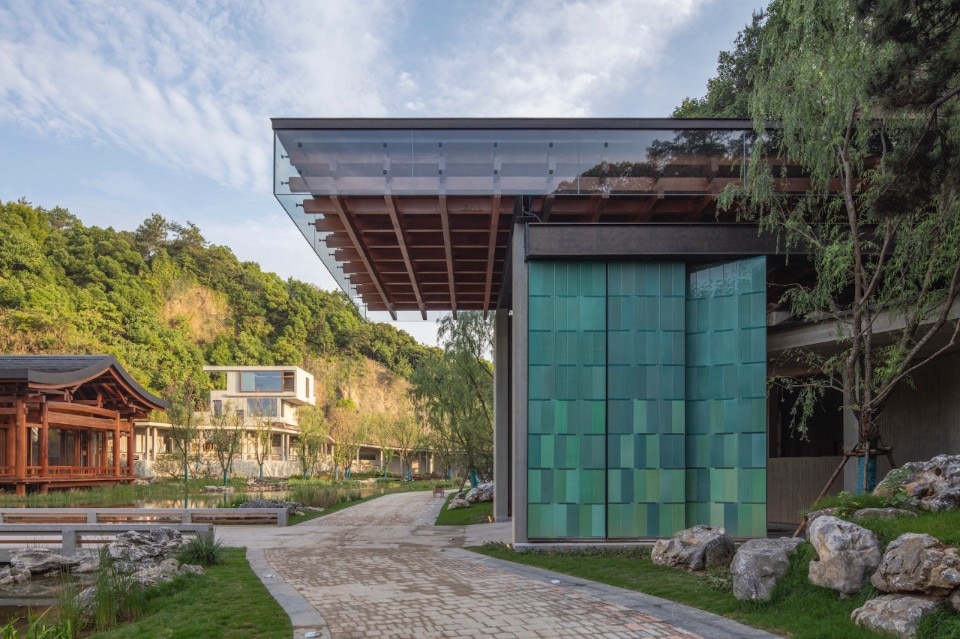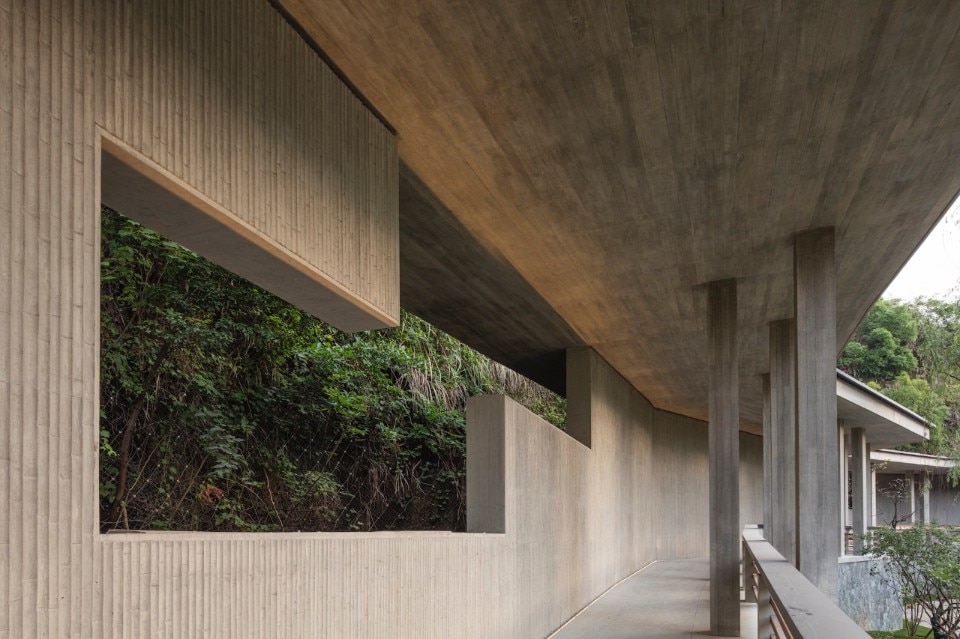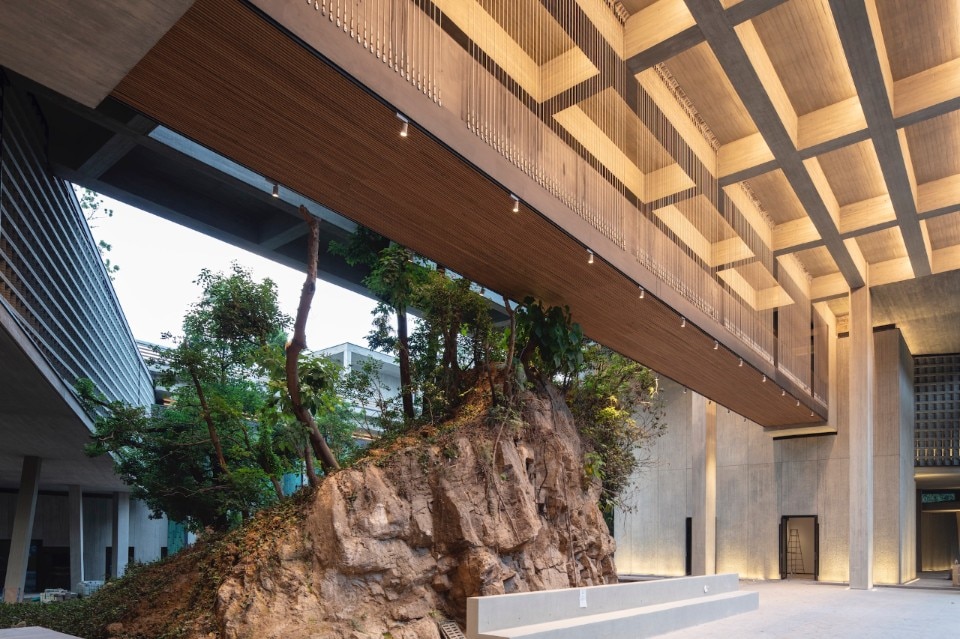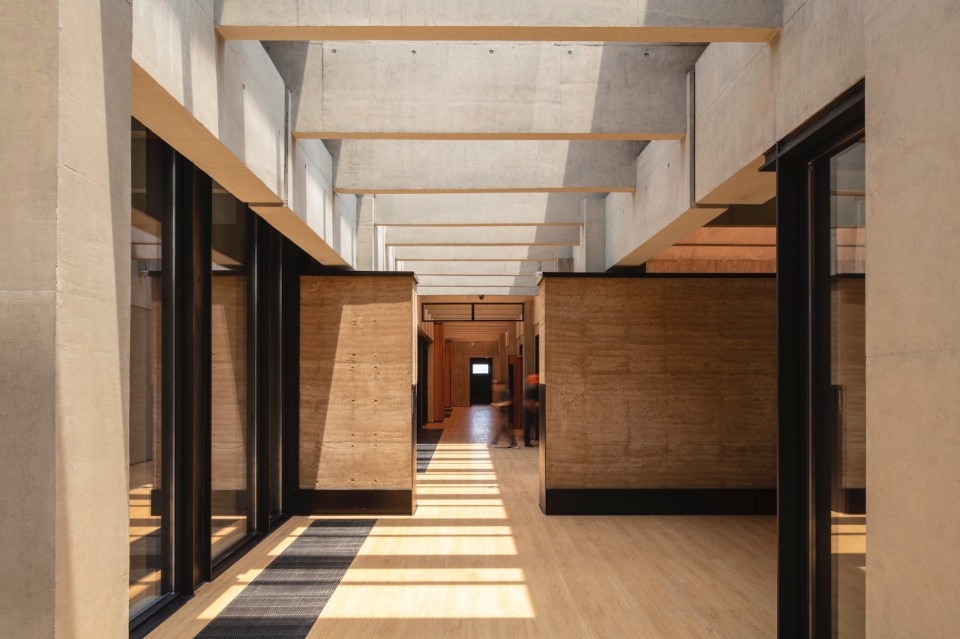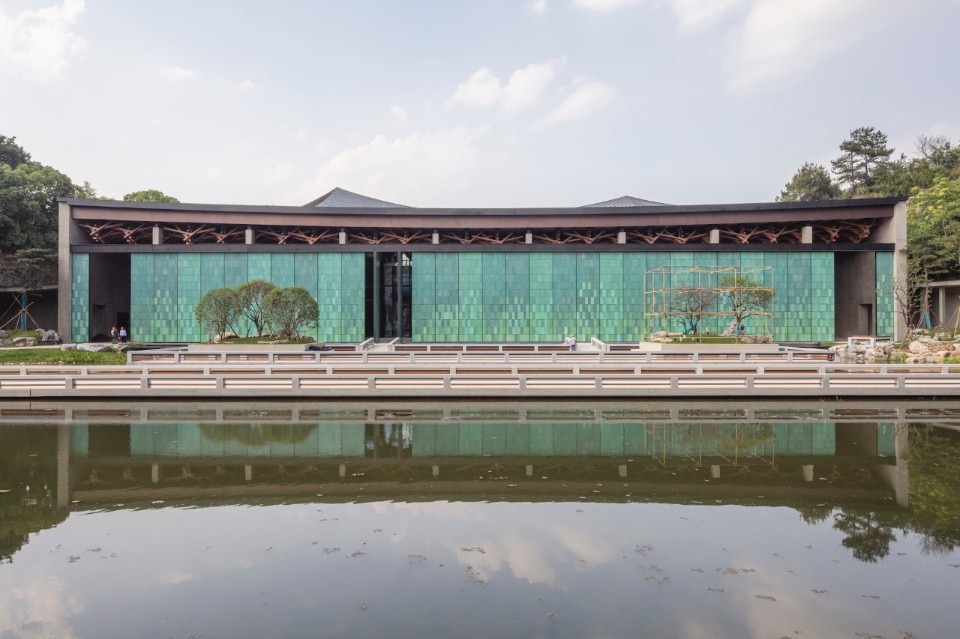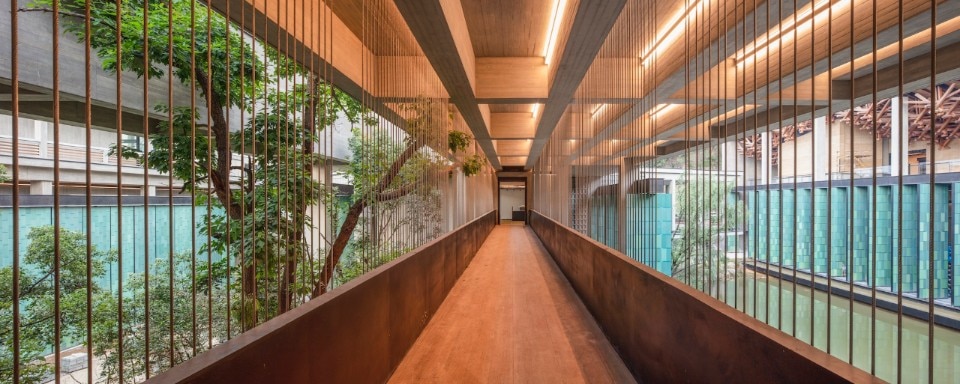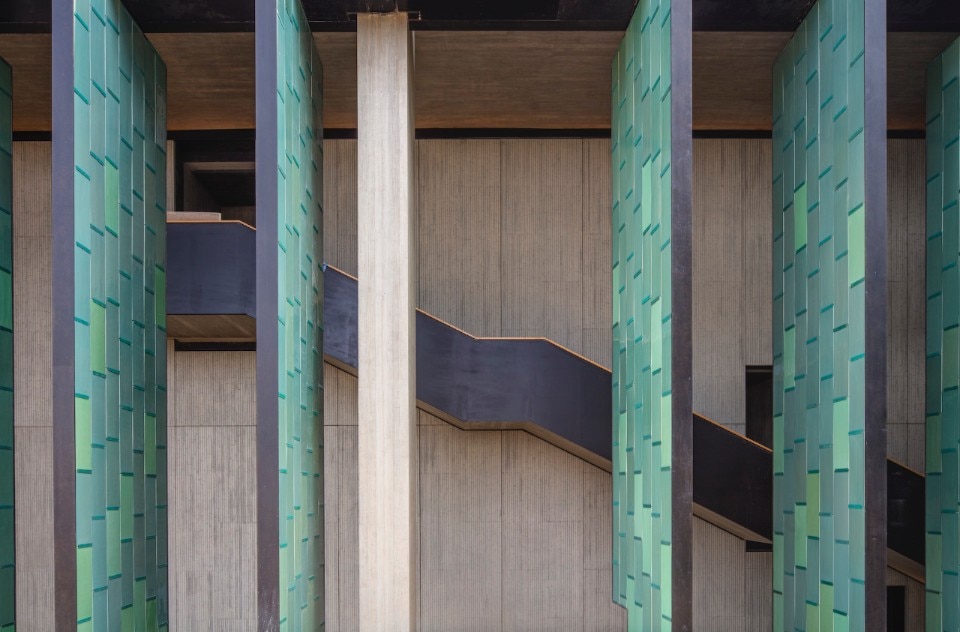This article was originally published on Domus 1072, October 2022.
“To see the shi of the brush weaving first in one direction, then in another, you would truly think it a dragon, in its subtle and sinuous progress: impossible to lay your hand on it!”
(Jin Shengtan)
A vibrant architecture is what we’ve come to expect from Wang Shu and Lu Wenyu. The National Archives in Hangzhou fulfils this expectation, and more. Its complexity, richness and size recall their recent Fuyang and Ninghai museums, but neither of those projects, fascinating though they are, has this building’s sophistication and quality of resolution, nor its animation. It can, I think, be taken as a high point of the work of Amateur Architecture Studio.
The site is a propitious coupling of a mountain with bodies of water. Having been articulated and intensified by the buildings, the two now, retrospectively, appear to have provided the project with its primary structure. There is hardly a more productive association in Chinese art and thought, shan shui: a strong vertical against an equally resilient horizontal, with virtue evident in the first, likely pleasure in the second. But mountain and water are not exactly opposites; instead, they are sibling contraries that possess shared attributes without renouncing their individual qualities. Some quantity of moisture exists in soil and stone, some measure of tangibility in water. Viewed more closely, or, better, over time, mountains and waters share something that is more profound than what distinguishes them: an irrepressible capacity for change.
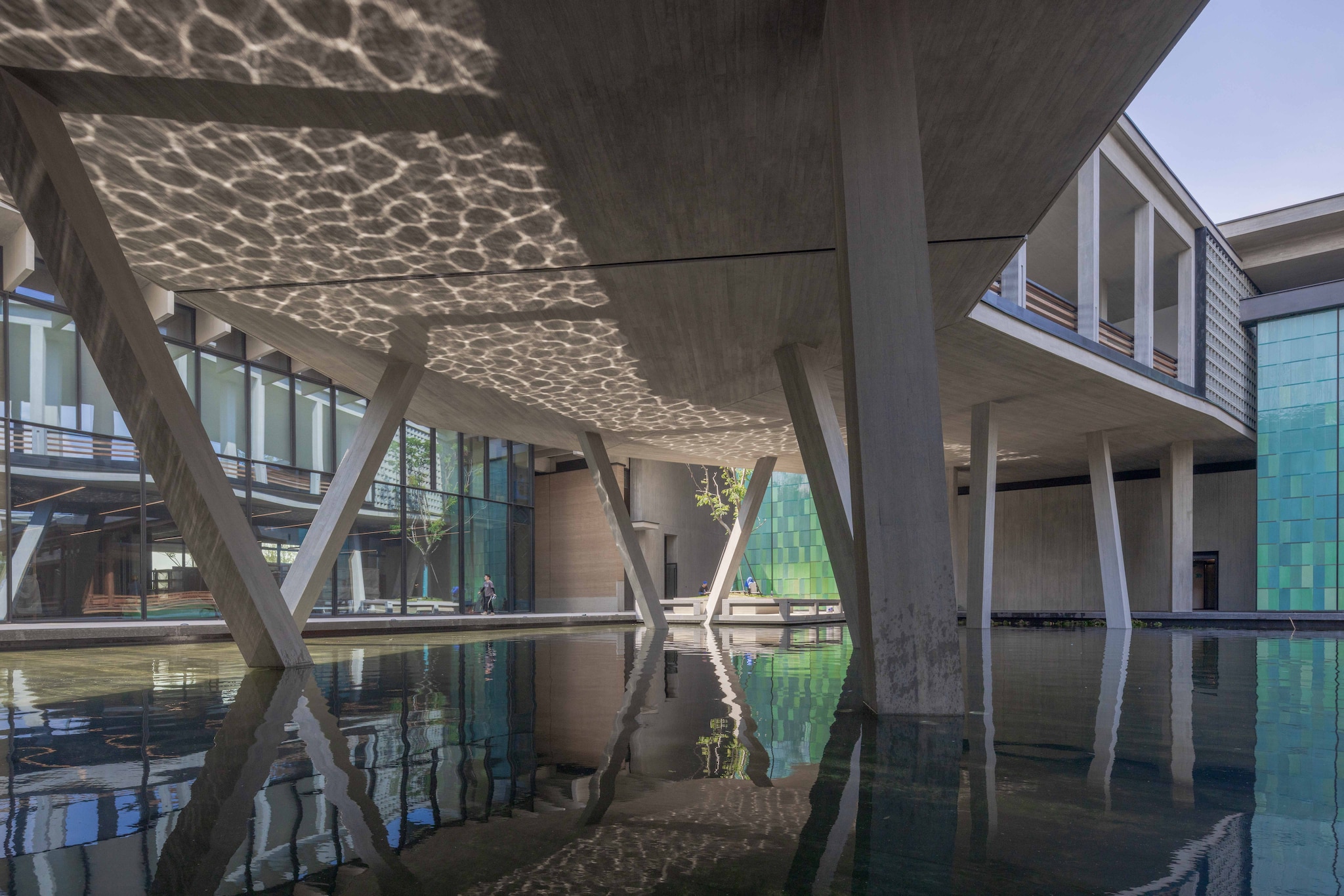
 View gallery
View gallery
In ancient writings, the potential for change was described as a kind of energy, giving rise to dynamism. The epigraphs above exemplify this indwelling propensity in both Chinese and European thought. When works of architecture show their capacity for incessant mutability, they can be called “natural construction”, as Wang Shu says. Hills and lakes show different faces with the passing of days, seasons and phases of life, birth to death. They are thus both places and powers, most vividly vibrant when opposite elements stand face to face as force and counterforce.
Movement along the lines where hills meet pools binds together the several buildings that make up the National Archives. Lines such as these are often blurred by rising mists or low clouds in the Song dynasty landscape paintings these architects study so closely. Here, paths are enclosed by a hybrid form, half-encaved and half-panoramic, with a platform, roof and wall adhering to the hill and a colonnaded frame opening onto lawns or water. Close proximity to the rock face is sometimes revealed through cuts in its enclosing wall, while the colonnade’s regular intervals measure the water’s expanse. Shadows and sunshine come together along this line, encouraging inward focus and outward orientation, against and in support of one another
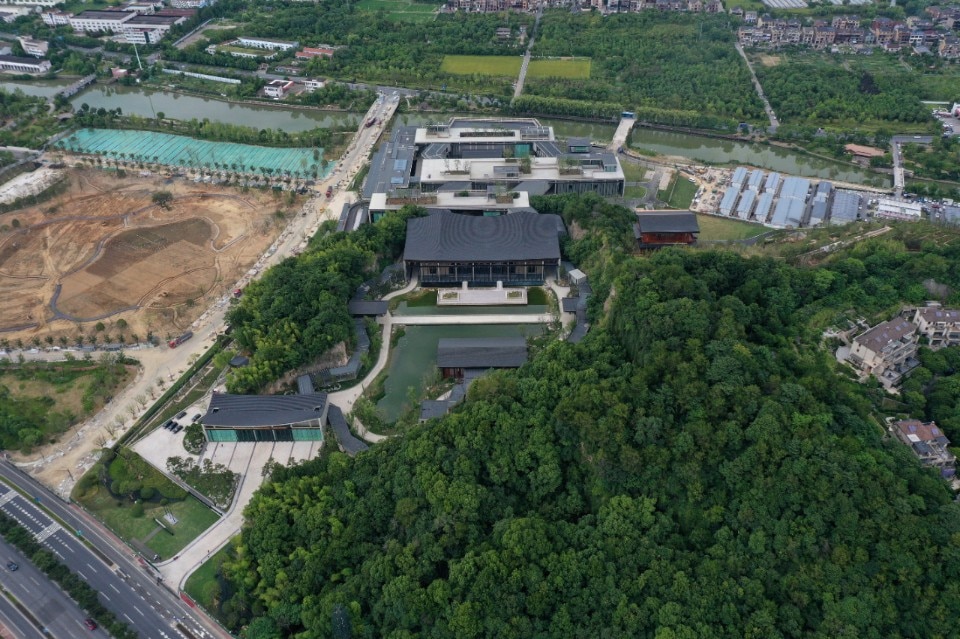
In traditional Chinese landscape paintings, atmospheric vapour often brings the sky down to earth, while rock and vegetation defy gravity’s pull. Displacement of levels also occurs in this project’s walkways, found variously at grade, bridge height or roof level, apparently interchangeable because of geometrical alignments and the use of a single material for different purposes. Complementarity between opposites can also be seen when the plans of passages are considered together, with vantage, arrival or departure points superimposed.
The more one spends time in and around these buildings, the more common conceptions of “nature” seem inadequate. These buildings don’t so much fit into natural terrain as reveal the tensions and affinities that give the landscape its unexpected richness and dynamism: wet stone, hard water, diagonal views from straight paths, and so on. Some forms recall precedents, but it is the creative interpretations that invite consideration. In the walks that recall the paths of classical gardens, for example, a double colonnade has been used, one line of columns inside the guardrail, another outside it. Why the atypical doubling? Scaling, I think. Inside, intervals give pace and measure to passage, while the lengthier intervals of the outer line are scaled to the hillside and the whole body of the building. The wall-side windows widen an already wide prospect, and the path’s zigzag plan alternately guides one’s feet forward and eyes in every other direction. Lastly, construction labour has left traces on the surfaces we see. Traditionally, paint and polish concealed building technique.
“It is especially pleasing to see hair moving in all possible ways, twisting around as if to tie itself in a knot, and waving upwards in the air like flames, almost in the way serpents weave themselves together, part advancing here, part there.”
(Leon Battista Alberti)
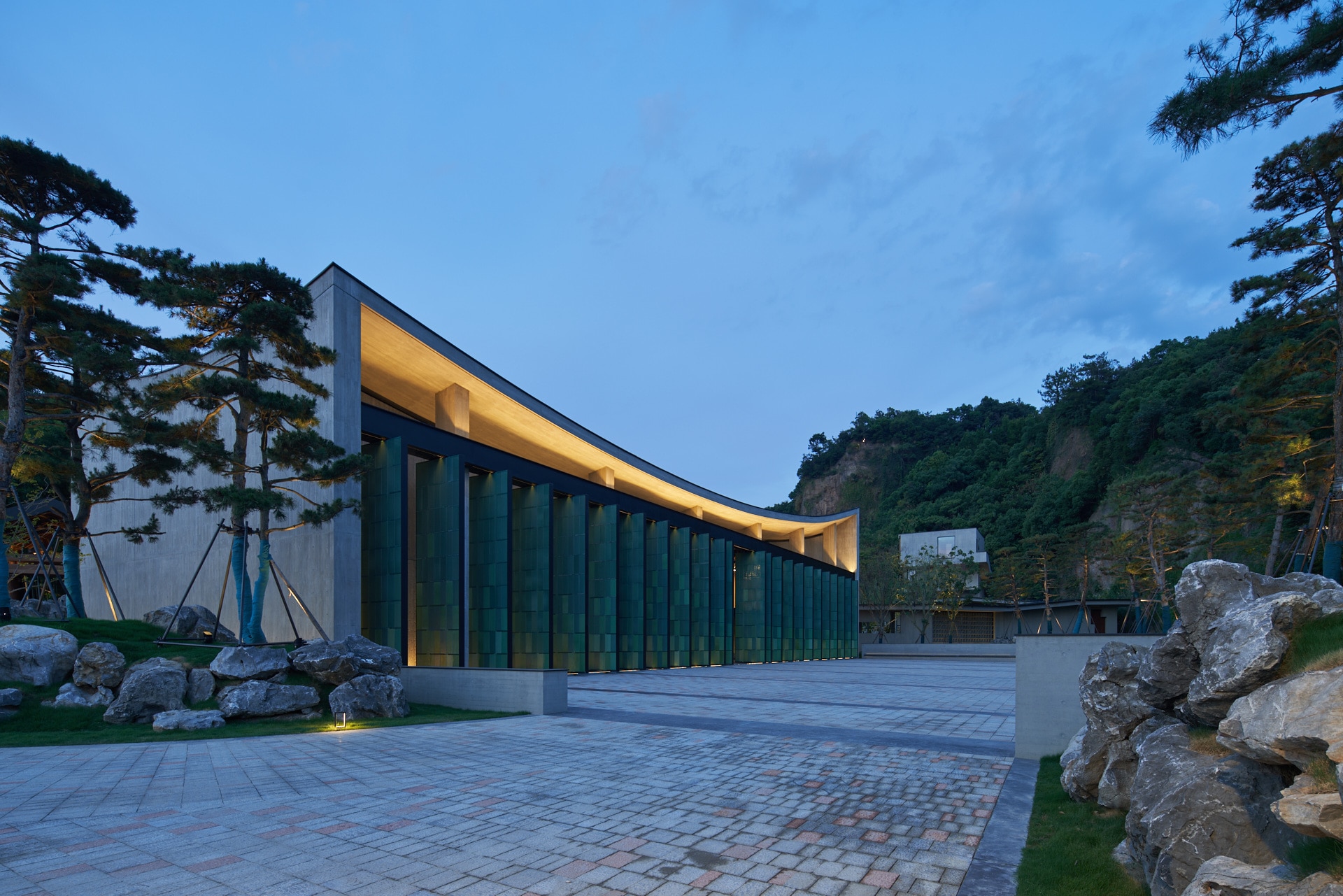
 View gallery
View gallery
But there is much more to the story of materials in this project; specifically, how they participate in the interplay of force and counterforce that I’ve thus far described in topographical terms. Consider a simple and surprising detail: the lapped mouldings that cover the joints between ceramic tiles. Unexpectedly, they stop short of the two-way connections they would ordinarily cover. A comparable hesitancy can be seen where structural columns meet floor or ceiling slabs. Negative joints hide the connections in shadow. Similarly, bridges abbreviate their reach towards the buildings they’ve been designed to connect. Why would elements hold themselves back from destinations they could easily reach? A column that keeps itself back from the slab it ostensibly supports shows its potential accomplishment, the potential that makes it what it is. When abbreviated, architectural elements reveal their power to act, a power analogous to that of living organisms. The question to which these details are the answer is how to bring a work of architecture to life.
We are well past old ideas of imitation, problem-solving or self-expression in architecture. This is a vibrant, pulsating architecture that doesn’t conform to nature but takes part in its continual transformation and renewal. “Movement,” for Leonardo da Vinci, “is created by the destruction of balance, for nothing can move by itself which does not leave its state of balance.” Axial disequilibrium is motivated by disaffection or desire. And turning away from or towards shows life in both animals and built works.
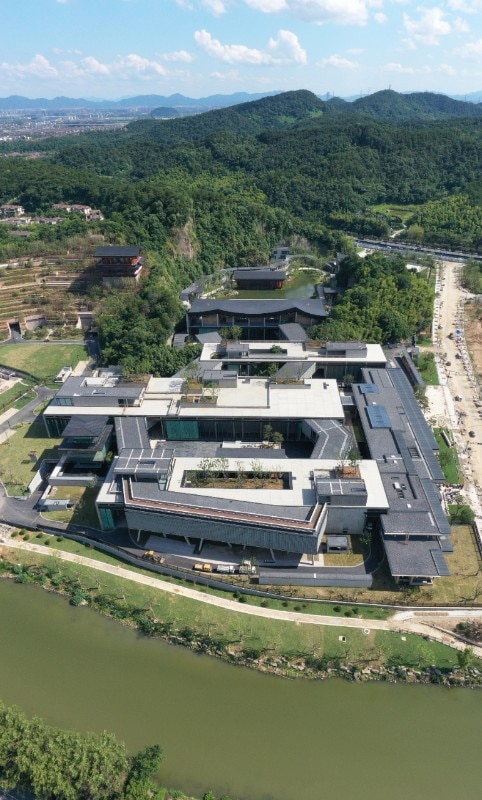
As one moves through this project’s several buildings, alternations of elements, materials and surfaces present themselves continually. A line of tall louvre-like panels clad in bright green tiles parallels one’s path towards a sombre grey wall. Antithetical characteristics also appear in the juxtaposition of the compressive and tensile supports of a suspended walkway. In these two cases and many others, a sense of vitality results from antithetical elements acting in response to one another. Repetition would render arrangements lifeless. If we accept the thesis put forward by the building – alternation everywhere and without end – we reach the startling conclusion that good architecture has no overall form. Discrete forms yes, but no form of the work as a whole.
Composition here has two basic premises: abundance and alternation, whereby an apparently unlimited number of elements ceaselessly vitalise one another and the entire work. This sense of a work without sovereign form but pulsating with life has antecedents in both Chinese and European traditions. Again Leonardo: “Observe how [an object’s contours] twist like a serpent... whatever you make, remember to avoid woodenness.” Likewise, Wang Fuzhi: “The [excellent] poem is like a vigorous dragon, always undulating, with whirling clouds surrounding it.” For both thinkers, continuous alternation vitalises figures and their surroundings.
Having freed itself from a dominant concept or royal principle, this building argues that continuity can be achieved through the interplay of contraries, a body reaching one way while turning its head another, a bridge that reaches towards but stops short of the threshold, panels that ascend but hold themselves back from the roof, and so on. With cataracts down a mountain face in mind, let’s conclude that elements with neither final purpose nor definitive form have one basic desire: to form successive contrasts that are not only animated and animating, like the natural world with which the architectural work joins step.


